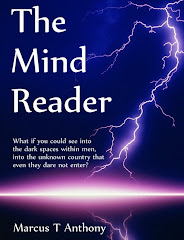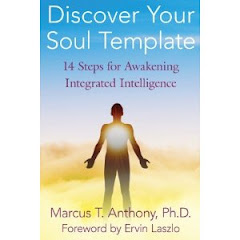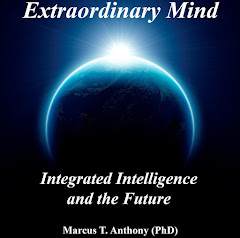Marcus T Anthony's new web site and blog can be found at: www.mind-futures.com.
Today, a little bit of philosophy of mind...
One day neuroscientist D. James Austen had a rather unusual experience as he waited for a train in London.
..he glanced away from the tracks towards the river Thames. …suddenly (he) felt a sense of enlightenment unlike anything he had ever experienced. His sense of individual existence, of separateness from the physical world around him, evaporated like morning mist on a bright dawn. He saw things “as they really are,” he recalls. The sense of “I, me, mine” disappeared. “Time was not present,” he says. “I had a sense of eternity. My old yearnings, fear of death and insinuations of self-hood vanished. I had been graced by a comprehension of the ultimate nature of things (Begley 2001 p 41).
One might expect that this profound experience would have led Austin to question some of the standard assumptions of mainstream science. Some might have interpreted the experience as evidence of a human perception that transcends ordinary awareness. Austen did no such thing. He concluded that it was merely “proof of the existence of the brain” (Begley 2001 p 41). Austen based this interpretation on the belief that “all we see, hear, and think is mediated or created by the brain” (Begley 2001 p 41). The experience was therefore ‘reasoned’ in reductionist and mechanistic terms.
It can be seen that Austen interpreted the experience in the language of neurophysiology. The event was an illusion created by the cessation of “certain brain circuits” – the amygdale, the “parietal lobe circuits”, and the “frontal and temporal lobe circuits” (Begley 2001 p 41). There is an implicit championing of reductionist knowledge, where analysis is the key way of knowing. With this comes a complete rejection of the actual insight (direct experience) provided by the mystical experience, and that insight was that there is a wholeness which pervades the cosmos. Here, the microscale neural activity has become more real than the experience itself.
This little incident in the life of one man epitomizes the entire discourse of modern mind science, which consciousness is defined in terms of the data gleaned from microprocesses within the brain, with the data at the first person level effectively ignored. What the neuroscientist sees is not the whole, but the parts, and those parts are mediated by technology. The image below shows what a neuroscientist might typically see of the ‘mind.’ The inner world of the mind, and the data of the mystical insight disappears with this methodology, while the reductionist and ‘scientific’ achieve privileged status within the system.
The excessive and unbalanced reductionism of much of modern science emerges from its materialism. The key issue is science’s often unexamined assumption that the microscale is primary, while the macroscale (whole) is secondary, built up from mechanistic micro-processes, in a one-way system. This is significant because reductionist science underpins neo-Darwinism, and neo-Darwinism underpins neuroscience, cognitive psychology and ultimately consciousness theory.
Mechanistic Western science, including the vast majority of mainstream evolutionary theorists, approaches the understanding of nature and cosmos in markedly different ways from thinkers holding a mystical/spiritual worldview. For Western science the focus is upon the bits and pieces of systems, the microscale. For those with a mystical bent, the whole – often in the form of ‘spirit’ - is seen as important, and often as the very basis of the entire system. The predominance of reductionism in western science illegitimates the very knowledge base of mystical spirituality and integrated intelligence, and conceals the knowledge it might potentially contribute to our understanding of the world and the cosmos.
This has been disastrous for the representation and understanding of inner and intuitive worlds. First person experience and all the data within the mind, has been reduced to neuro-chemistry and micro-processes. This has resulted in the rejection of thousands of years of
Magnetic Resonance Imaging; (MRI) brain scan. The modern neuroscientist does not see into the mind. What she sees is the ‘surface’, the externalities of the brain. This methodology and this culture emerge from the mechanistic paradigm.
data garnered from mystical spirituality. Current cognitive psychology continues in this vein, and its reductionism is typically uncritically represented in both academic and popular science. Charles Tart writes that a repeated theme is the attempt to explain consciousness via simpler, non-conscious sub-components, reducing the mind to information processing within physical systems. The digital computer has inevitably become the key metaphor.
A passage from neuroscientist and sceptic Michael Persinger (2001) sheds further light here. Persinger consistently argues for a reductionist and brain-based explanation for paranormal phenomena. His verbs of knowing (in bold) reveal an interpretation that is typical of the critical/rational worldview and modern science.
From the perspective of modern neuroscience, all experiences are generated by brain activity, or at the very least strongly correlated with brain activity. As the complexity of this brain activity is mapped and described mathematically, the nuances of thought and the idiosyncratic noise that define us as individuals will be quantified. To date there has not been a single type of paranormal experience that is not understandable in terms of known brain functions. The consideration of these experiences as predictable (control) components of brain activity will allow the differentiation between the illusions of intrinsic stimulation and the validity of information obtained through mechanisms yet to be explained (Persinger 2001 p 524. Italics added).
Here Persinger presents a hyper-materialistic conception of mind, mirroring neo-Darwinian assumptions. His view epitomises mainstream discourse in psychiatry and cognitive psychology, where the brain and consciousness are depicted as essentially synonymous. Internal choice/free will (which is difficult to reduce to micro-components) is often depicted as an illusion, and all unknowns are explained in terms of “mechanisms” that – even if unknown at present – will be identified in due course. More than a hundred years ago, William James referred to this kind of thinking as ‘promissory materialism’. Thus Persinger effectively eliminates first person data from the discussion, reflecting deeper paradigmatic asumptions – most notably the mechanistic paradigm’s reductionist privileging of micro-processes over macro-level processes.
The verbs of knowing tell us much. Microscale neuronal activity is “described” and “defined” – where visual and verbal/linguistic intelligences are key. The verb “mapped” represents the materialisation of subtle phenomena, ascribed to the hard page, and in abstract form. It can be seen that five key ‘rational’ ways of knowing are given privileged status: experimentation, analysis, classification, mathematical/logical and verbal/linguistic intelligences. Mathematical description is the ultimate validation process, and consciousness is depicted as “quantified… idiosyncratic noise”.
With this kind of representation of psi experience, the material substrate becomes the entire focus of the examination, while the mystical experience itself becomes forgotten, almost invisible.
There is another notable weakness in Persinger’s account. There is no deep questioning at the systems or worldview levels. This is consistent with empirical science’s typical reluctance to submit its own worldview to scrutiny, or to consider the possibility that its knowledge structures have a socio-cultural basis.
Persinger is an actor in a mythological play, playing the role of detached and impartial scientist. His part is to act as if he is untouched by the uncomfortably affective world of the human psyche and its nebulous, intuitive feelings.
Personally, I doubt that any human being exists in such a floating fortress of perfect objectivity.
Marcus
Marcus
References
Begley, S. (2001, May 7). Religion and the brain. Newsweek, 52–57.














You nailed it, Marcus. That brain image pretty much says it all.
ReplyDeleteGood to hear from you again - Trish or Rob (LOL)! I hope these philosophical digressions are not too difficult to read though. I like to mix it up a bit here. Some posts are more practical and reader-friendly, while others go more into philosophy and science.
ReplyDeleteMarcus